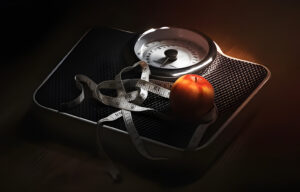Table of Contents
ToggleNutrition Mistakes: A Challenge in a Fast-Paced World
In today’s fast-paced world, navigating the often-confusing world of nutrition can be a challenge. We’re bombarded with diet trends, conflicting information on food labels, and the constant pressure to make healthy choices. But amidst the noise, there are some fundamental mistakes many of us unknowingly make. By understanding these common pitfalls, you can take control of your diet and fuel your body for optimal health.
Fueling Your Body Right: Why Nutrition Matters
A healthy diet is essential to overall well-being. The fundamental building blocks our bodies need to operate correctly are found in our food. We receive energy from a balanced diet high in fruits, vegetables, whole grains, lean protein, and healthy fats. It also helps us maintain a robust immune system and control our weight. Adhering to appropriate nutritional recommendations will improve your entire quality of life, mood, cognitive performance, and physical health [1, 2].
Skipping Meals: The Backfire Effect on Your Metabolism
Meal skipping, which is frequently done to cut calories, can work against you when trying to lose weight. When you restrict your body of fuel for prolonged periods, your metabolism slows down to preserve energy [3]. In the long run, this may make weight loss more difficult. Eating regular meals and snacks throughout the day is a more effective way to maintain a healthy metabolism and avoid hunger feelings that could later result in overindulgent eating.
Simple Diet Tip: Plan your meals and snacks to avoid unhealthy choices when hunger strikes.
Fooled by Labels? Decoding Healthy vs. Unhealthy Options
Food labels can be a valuable tool for making informed choices, but they can also be misleading. Don’t be fooled by health claims or front-of-package marketing. Instead, focus on the ingredients list. Look for whole, unprocessed foods with a short list of recognizable ingredients. Products heavy in salt, bad fats (trans and saturated), and added sweets should be avoided.
Here’s a helpful trick: aim to choose products where the first few ingredients are recognizable whole foods, like “chickpeas,” “brown rice,” or “roasted vegetables.”
Healthy Eating Tip: Get a trustworthy calorie counter app to help you keep an eye on your daily intake and make wise decisions.
Table 1: Decoding Food Labels
| Term | Description |
|---|---|
| “Whole Foods” | Unprocessed or minimally processed foods retain most of their inherent nutrients. |
| “Added Sugars” | Sugars and syrups are added to processed foods and beverages. |
| “Saturated Fat” | Found mainly in animal products and some plant-based oils. Can increase LDL (“bad”) cholesterol. |
| “Trans Fat” | Unhealthy fats are created through processing. Avoid completely. |
| “Sodium” | Table salt. Excessive intake can contribute to high blood pressure. |
Portion Distortion: Are You Eating More Than You Think?
It’s easy to underestimate portion sizes, especially when dining out or eating mindlessly while watching TV. Over time, this can lead to unknowingly consuming more calories than you need.
Here are some tips to manage portion sizes:
- Use smaller plates: Studies show that people tend to fill their plates, regardless of the size.
- Measure your portions: Invest in measuring cups and spoons to get a handle on serving sizes.
- Mindful eating: Pay attention to hunger and fullness cues. Eat slowly and savor your food.
- Beware of hidden calories: Be aware of calorie-laden additions like salad dressings, sauces, and sugary drinks.
Table 2: Sample Portion Sizes
| Food Group | Sample Serving Size |
|---|---|
| Lean Protein (chicken, fish) | 3-4 ounces (about the size of a deck of cards) |
| Whole Grains (brown rice, quinoa) | ½ cup cooked |
| Vegetables | 1 cup raw or ½ cup cooked |
| Fruits | 1 medium piece or 1 cup berries |
| Healthy Fats (avocado, nuts) | ¼ cup or a small handful |
Diet for Beginners Tip: Start by making small, sustainable changes to your diet. Gradually increase your intake of fruits, vegetables, and whole grains while reducing processed foods and sugary drinks.
Hydration Hero or Hidden Villain? The Truth About Beverages
Water is necessary for good health. It helps with digestion, carries nutrients, and controls body temperature. Fatigue, headaches, and difficulties focusing can result from dehydration. Eight glasses, or two liters, of water, should be consumed each day. This is only a general recommendation; your specific needs may differ based on things like climate and degree of activity.
How to Avoid Common Nutrition Mistakes on the Go?
Planning and preparation are key! Pack healthy snacks like fruits, nuts, or yogurt to avoid unhealthy vending machine choices. Many restaurants offer healthy options; look for grilled dishes, salads with lean protein, and whole-wheat wraps.
Banishing the “Good” vs. “Bad” Food Fight: Building a Balanced Plate
Forget the rigid categories of “good” and “bad” foods. A healthy diet is all about balance and variety. While some foods are certainly more nutrient-dense than others, there’s room for occasional indulgences.
Focus on making your plate a colorful canvas: Fill half your plate with non-starchy vegetables like broccoli, carrots, or leafy greens. Add a quarter plate of lean protein sources like grilled chicken, fish, or beans. The remaining quarter can be a whole grain like brown rice or quinoa. Don’t forget healthy fats like avocado or a drizzle of olive oil.
Best Foods for Health Tip: Explore a variety of fruits and vegetables. Each color offers a unique range of vitamins, minerals, and antioxidants.
Conclusion: Making Nutrition Simple: Small Steps for Lasting Change
Remember, there’s no one-size-fits-all approach to nutrition. The key is to find healthy eating habits that work for you and your lifestyle. Start by making small, sustainable changes. Gradually incorporate more whole foods, prioritize mindful eating, and stay hydrated.
Here are some final takeaways to keep in mind:
- Focus on progress, not perfection. There will be slip-ups along the way. Don’t let setbacks derail your efforts.
- Enjoy the journey. Experiment with new recipes and discover healthy foods you love.
- Consult a registered dietitian or licensed nutritionist for personalized guidance, especially if you have any underlying health conditions.
You are in charge of your health and fitness by making wise decisions and forming wholesome routines.
FAQ
Can I Still Enjoy My Favorite Foods and Eat Healthy?
Absolutely! Most healthy eating plans allow for occasional indulgences. The key is moderation and portion control. Enjoy your favorite treat in a smaller serving size, or balance it out with healthy choices throughout the day.
Where Can I Find More Reliable Nutrition Information?
- Academy of Nutrition and Dietetics
- U.S. Department of Agriculture (USDA)
- National Institutes of Health (NIH)
These resources offer credible information on healthy eating and can help you navigate the world of nutrition with confidence.

















